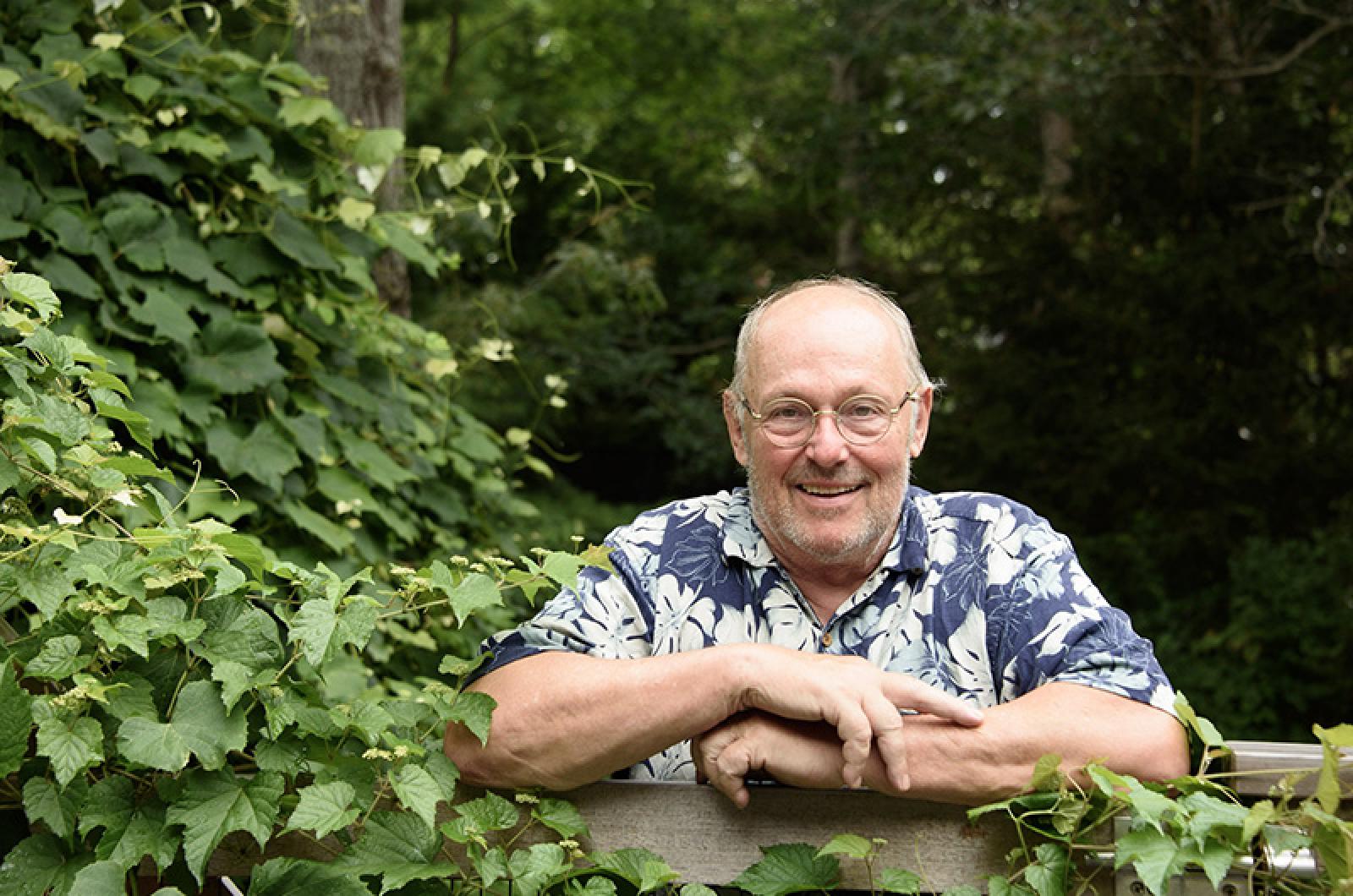Stephen Goodwin’s golf epiphany came to him in an Irish field of wildflowers.
That day, he had set out for a solitary round in the west of Ireland, but after driving up the lane to Connemara golf links, he encountered an aesthetic of the game that would change his life.
What appeared to be a field of daisies and buttercups was in fact part of the golf course, specifically a links course.
“You look out there and ask ‘Where’s the golf course?’ because everything kind of looks like that,” he said, recalling that day in 1986. “I just went out there and played. The whole thing about the wind, the seaside air, the ruggedness of it — it was a complete revelation.”
Over the last two decades he has been an evangelist of sorts about links golf — familiar to hackers in Ireland and Scotland, in particular, but far from routine to U.S. golfers accustomed to bland muni layouts and formulaic resort courses.
Through three books, Mr. Goodwin, a longtime seasonal visitor who recently retired to Vineyard Haven with his wife Robyn, has chronicled a movement in which course developers and architects have looked back in time for inspiration.
Mr. Goodwin already had a pretty significant day job, as a literature and creative writing professor at George Mason University, and as a novelist, an essayist and a golf writer. He also served as director of the literature program at the National Endowment for the Arts and co-founded the PEN/Faulkner Foundation. (He even helped develop a golf course in rural Maryland, Whiskey Creek, with his friend and Vineyard developer Sam Dunn.)
When he met Mike Keiser, a Chicago businessman and co-founder of a greeting card company, he found a fellow golfer and kindred spirit. Eventually, Mr. Goodwin penned the book Dream Golf: The Making of Bandon Dunes, the signature links course Mr. Keiser developed 20 years ago on a remote stretch of Oregon coastline.
A coffee-table book about Bandon Dunes followed, and now comes The Nature of the Game: Links Golf at Bandon Dunes and Far Beyond, which he co-wrote with Mr. Keiser. It’s a lushly illustrated book about the complex of links courses now at Bandon and in the United States, Nova Scotia, Tasmania and elsewhere.
Links and other course designs aimed at making the game more accessible come at a critical time for golf. Over the past two decades, hundreds of courses have closed and the number of rounds played has been dropping steadily. (Except during pandemic years of 2020 and 2021, when people sought a safe, outdoor sport where social distancing is a given. Thus far, 2022 has seen that trend flatten, according to the National Golf Foundation, which collects data on the game.)
Links golf courses typically are rough-hewn, mostly by the sea, with no water hazards (except the ocean). More than its physical characteristics, links golf is a philosophy about how the game should be played: there are no motorized golf carts to haul you and your bag around the course, no GPS systems to measure the yardage for each shot, just you and perhaps a caddy, walking. The courses tend to be more environmentally friendly, built on sandy soil featuring grass that doesn’t require fertilizer or as much water.
But it all starts with adapting a golf course to the natural landscape, says Mr. Goodwin.
“Basically, it has to be naturally occurring. You can’t do much to it . . . You go out there, put a tee down, dig a little hole and you play golf. That’s what happens. That’s how it starts. It gets immensely complicated, but that’s kind of what Mike was trying to do.”
For Mr. Goodwin, a new generation of golf architects who embrace a links approach is paying particular attention to the golfer’s visual experience, and not necessarily designs that create the longest or most punishing courses.
“These guys building these courses are very, very deliberately thinking about beauty,” he says.
One need only turn the pages of the new book to see example after example after example of that.
In fact, Mr. Goodwin ventures to say that the beauty of links courses can rise to the level of art. He holds up his phone, after Googling a photo of renowned designer and sculptor Maya Lin’s grassy, wavy earthworks sculpture in upstate New York, called Storm King Wavefield.
Then he thumbs through his new book and stops at a picture of a golf hole at Sheep Ranch, the fifth course developed at Bandon, featuring a lush, wavy landscape rolling down to the Pacific Ocean.
“Look at this!” he says. “Nobody knows who did this [but] I know who did this. Jim Craig did this . . . . Which is more beautiful?” [Mr. Craig, for the record, operated the bulldozer as the “shaper” of the putting green and was a design collaborator.]
“No one would say that’s a work of art — except me,” Mr. Goodwin says, laughing. “But I think that’s what’s happened, a whole generation of designers and the people that work with them have started to make these golf courses, which, who knows, [are] living art.”




Comments
Comment policy »